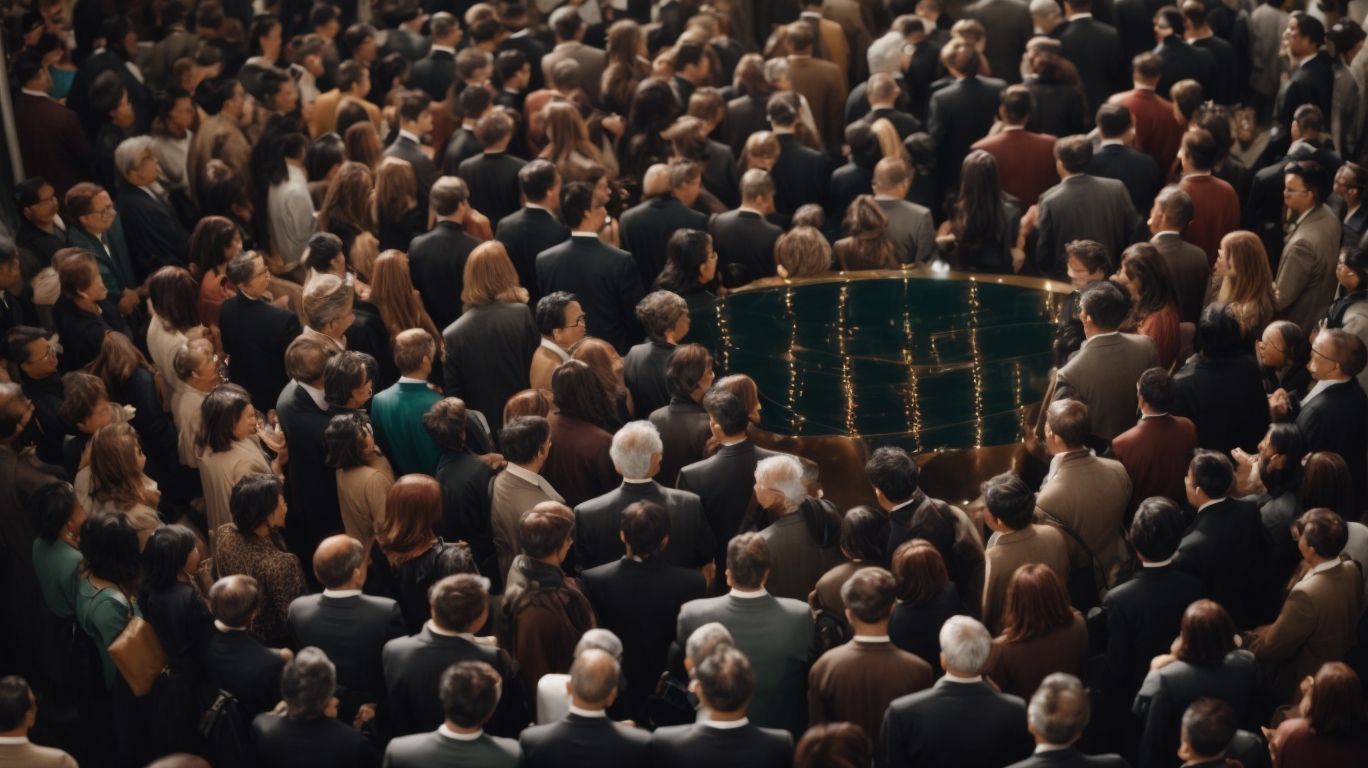Have you ever noticed how a group of birds move together in the sky, or how a school of fish swims in perfect harmony? These phenomena can be explained by the concept of Common Fate in psychology.
In this article, we will delve into the Gestalt principle of Common Fate, its role in perception, and its examples in everyday life. We will also explore theories on the evolutionary significance of Common Fate, its use in advertising and design, and its impact on group dynamics and decision making.
So, let’s unravel the mysteries of Common Fate together!
Contents
- 1 What Is Common Fate?
- 2 The Role Of Common Fate In Psychology
- 3 Examples Of Common Fate In Everyday Life
- 4 Theories On The Evolutionary Significance Of Common Fate
- 5 How Is Common Fate Used In Advertising And Design?
- 6 Common Fate In Group Dynamics And Decision Making
- 7 Frequently Asked Questions
- 7.1 What is the concept of common fate in psychology?
- 7.2 How does the concept of common fate relate to social psychology?
- 7.3 Can you give an example of common fate in everyday life?
- 7.4 Is the concept of common fate limited to just visual perception?
- 7.5 How does the concept of common fate influence our behavior?
- 7.6 Are there any potential downsides to the concept of common fate?
What Is Common Fate?
Common Fate is a concept rooted in Gestalt psychology that influences how individuals perceive groups of objects based on their shared movement or direction.
When objects move together or in the same direction, our brains tend to perceive them as part of the same group or connected pattern. This principle plays a crucial role in visual perception, helping us make sense of the world around us by organizing elements into cohesive wholes.
Common Fate is one of the fundamental principles of Gestalt psychology, which focuses on how the mind organizes visual information into meaningful patterns. It is closely related to other Gestalt principles, such as proximity, similarity, and closure, which collectively explain how we perceive and interpret visual stimuli.
The Role Of Common Fate In Psychology
In psychology, Common Fate plays a crucial role in understanding how individuals interpret visual cues and group elements based on their shared direction or motion.
This phenomenon, rooted in gestalt principles, highlights how the human brain naturally seeks patterns and relationships in visual stimuli. When multiple objects move in the same direction, they are perceived as belonging together, forming a cohesive unit. This tendency helps us make sense of complex scenes quickly and efficiently, guiding our perceptual organization. Common Fate not only influences how we group objects but also affects our depth perception and overall visual processing. By studying this concept, researchers gain insights into the intricate workings of the mind and its extraordinary ability to interpret the world around us.
What Is The Gestalt Principle Of Common Fate?
The Gestalt Principle of Common Fate emphasizes how elements perceived to move together are grouped, highlighting the importance of relationships and continuity in visual perception.
This principle suggests that when objects or elements move in the same direction at the same rate, our brain automatically groups them together as one cohesive unit, even if they are physically separate. This phenomenon plays a crucial role in how we perceive motion and organization in our visual environment. By recognizing common fate among visual stimuli, individuals can quickly identify patterns, relationships, and underlying structures in complex scenes, facilitating efficient processing and comprehension of visual information.
How Does Common Fate Affect Perception?
Common Fate influences perception by guiding individuals to distinguish figures from the background, establish proximity relationships, and identify cohesive visual elements based on shared movement.
When visual elements within a scene move in a coordinated manner, observers tend to group them together as part of the same entity or object. This principle of Common Fate can be seen in various aspects of our daily lives, from flocking birds flying in unison to the synchronized movements of dancers on stage. This grouping effect helps our brains make sense of complex visual stimuli by organizing them into meaningful patterns, highlighting the interconnectedness of different elements.
Examples Of Common Fate In Everyday Life
Common Fate manifests in numerous everyday scenarios, such as the synchronized movement of flocking birds, illustrating how shared direction creates organization and patterns.
This phenomenon of Common Fate goes beyond just the natural world; human behavior also exhibits this intriguing principle.
Think about a group of people walking together in the same direction on a busy street. Their synchronized movement not only enhances their safety but also creates a visually cohesive display of unity. Even in traffic, drivers following the same route unknowingly demonstrate common fate as their vehicles flow in a synchronized manner, showcasing the beauty of shared direction.
Flocking Birds
Flocking birds exemplify Common Fate as they move collectively in synchronized patterns, showcasing how shared movement creates cohesion and organization within the group.
This phenomenon is a stunning display of nature’s harmony as thousands of individual birds move as one cohesive unit. Their synchronized flight patterns are a result of simple rules-based interactions that govern their behavior.
Through observation, scientists have discovered that each bird aligns its direction and speed with its neighbors, leading to mesmerizing aerial ballets that seem almost choreographed. This interaction fosters a sense of unity and safety within the flock.
School Of Fish
A school of fish demonstrates Common Fate underwater, where their coordinated swimming reflects shared direction and cohesion within the group.
Common Fate is a concept that explains how individual elements perceived as moving together in a consistent manner are perceived as part of a group. In the case of fish, their synchronized swimming not only creates a mesmerizing visual display but also serves as a survival strategy.
When fish swim together in a school, they are better protected from predators, as the group appears larger and more intimidating. Their collective movement allows them to find food more efficiently and navigate through their underwater environment with greater ease.
Marching Band
A marching band showcases Common Fate through unified movements and choreography, where members synchronize their steps and actions to create a visually cohesive performance.
Each member of the marching band plays a crucial role in embodying the concept of Common Fate. Whether it’s the drumline maintaining a steady rhythm or the brass section delivering powerful melodies, their synchronized efforts contribute to the overall harmonious experience. The visual impact of shared direction is evident in their precise formations and transitions, where every individual seamlessly blends into the collective whole. This coordinated effort not only enhances the auditory experience but also captivates the audience with a mesmerizing display of unity and precision.
Theories On The Evolutionary Significance Of Common Fate
The evolutionary significance of Common Fate is rooted in theories that suggest its role in providing survival advantages and fostering social cohesion among group members.
Common Fate, as a concept, revolves around the idea that objects moving in a similar direction are perceived as part of the same group or entity. In evolutionary psychology, this phenomenon is believed to have emerged as a survival strategy. When individuals within a group perceive a common fate, they are more likely to collaborate and work together towards shared goals, increasing the group’s overall chances of survival.
This notion is deeply embedded in the evolutionary history of social species, where cooperation and collective action often determine the success of a group. By bonding through perceived common fate, group members develop a sense of unity and belonging, which in turn strengthens social ties and fosters a sense of community.
Survival Advantage
The concept of Common Fate offers a survival advantage by enabling swift adaptation to environmental changes, enhancing group coordination and responses to external threats.
This principle is often observed in various species, where individuals within a group exhibit similar behaviors or responses to a specific stimulus, thereby increasing the group’s chances of survival. Common Fate can manifest in diverse ways, from synchronized movements in flocks of birds, schools of fish, to coordinated hunting strategies in packs of predators.
Social Cohesion
Common Fate promotes social cohesion by fostering bonds within groups, enhancing cooperation, communication, and unity among individuals facing common challenges.
In an environment where individuals share a collective destiny, the sense of Common Fate plays a pivotal role in establishing trust and solidarity among group members. Through a mutual understanding of shared objectives and outcomes, individuals are more likely to work collaboratively towards achieving common goals. This shared identification not only strengthens interpersonal relationships but also reinforces a sense of belonging and commitment within the group.
How Is Common Fate Used In Advertising And Design?
Common Fate serves as a powerful tool in advertising and design, influencing visual hierarchy, aesthetics, and user experience through cohesive and engaging elements.
When applied in advertising campaigns, the principle of Common Fate seamlessly guides the viewer’s eye towards a focal point, creating a sense of movement and direction within the design. This technique involves grouping elements that share a common motion or destination, aligning them in a visually compelling manner that captivates the audience. By harnessing this phenomenon, designers can enhance the overall aesthetics of their compositions and improve the user experience by leading users through a structured and intuitive journey. Utilizing Common Fate effectively in both print and digital media can significantly elevate the impact and memorability of the visual message being conveyed.
Animated Logos
Animated logos leverage Common Fate to create engaging designs where elements move in unison, capturing audience attention and reinforcing brand identity through dynamic visuals.
Common Fate, a principle of Gestalt psychology, allows animated logos to capitalize on the concept that elements moving together are perceived as a single unit, enhancing the overall coherence of the design. By employing this principle, animated logos can guide the viewer’s focus smoothly from one element to another, creating a seamless experience that resonates with the audience.
The cohesive motion of elements in animated logos not only adds aesthetic appeal but also helps in establishing a strong visual identity for the brand. As viewers encounter the logo in various contexts, the consistent movement reinforces brand recognition and creates a lasting impression in their minds.
Moving Objects In Advertisements
In advertising, the use of moving objects aligned with Common Fate triggers audience perception, guiding viewers’ focus and enhancing message retention through dynamic visual storytelling.
Moving objects that follow the principles of Common Fate in advertisements assist in creating a seamless flow of visual information that captures the audience’s attention effortlessly. This technique essentially utilizes the innate tendency of individuals to group elements that move together, creating a sense of connection and coherence in the narrative. By leveraging this psychological phenomenon, advertisers can effectively direct the audience’s gaze towards key elements of the message, ensuring that crucial information is both noticed and remembered.
Interactive Websites
Interactive websites leverage Common Fate to create user-friendly interfaces, where elements respond cohesively to user interactions, enhancing functionality and optimizing the user experience.
Common Fate is a design principle rooted in Gestalt psychology, where items sharing similar movement or behavior are perceived as a group. This principle is skillfully applied in interactive website design to establish visual harmony and guide users through the interface seamlessly.
Elements moving or changing in unison allow users to predict the outcome of their actions, creating a smooth and intuitive browsing experience. For instance, a carousel of images rotating together or buttons changing appearance in sync with cursor movements all adhere to the concept of Common Fate.
Common Fate In Group Dynamics And Decision Making
Common Fate plays a role in group dynamics and decision-making processes, influencing social influence, consensus-building, and collective behaviors within groups.
Common Fate refers to the principle that individuals tend to perceive elements that move in the same direction as parts of a unified group or object. This phenomenon greatly impacts how individuals within a group behave, make decisions, and interact with one another. By aligning their actions towards a shared direction, group members are more likely to experience social influence, foster consensus, and exhibit collective behaviors that contribute to the overall cohesion and effectiveness of the group dynamics. The interplay of shared direction in shaping collective behaviors underscores the importance of understanding Common Fate in the context of decision-making processes and group dynamics.
Groupthink
Groupthink exemplifies the influence of Common Fate on decision making, where group members prioritize harmony and conformity over critical evaluation, potentially leading to flawed outcomes.
Common Fate, as a psychological concept, refers to the human tendency to align with a group’s decisions or actions in pursuit of shared goals, often resulting in a sense of unity and belonging among members.
This phenomenon can be a double-edged sword in decision-making processes. On one hand, it fosters collaboration and unity, enhancing teamwork and efficiency. On the other hand, it may stifle diverse perspectives and innovative ideas, creating a tunnel vision where dissenting voices are sidelined.
When group members consistently seek consensus and prioritize maintaining positive relationships over constructive debate, they risk overlooking potential pitfalls or alternative solutions that could lead to a more robust decision. This pressure to conform can suppress critical thinking and pave the way for errors in judgment.
Consensus Decision Making
Consensus decision-making relies on Common Fate to establish shared direction and collaborative efforts, fostering unity, cohesion, and collective responsibility within decision-making processes.
Common Fate, as a guiding principle in consensus decision-making, emphasizes the interconnectedness of group members’ destinies regarding the outcomes of their decisions.
By recognizing that the success or failure of decisions affects everyone involved, individuals are encouraged to work together towards a common goal, creating a sense of mutual accountability and shared ownership.
Through aligning their efforts towards a unified outcome, participants in consensus decision-making scenarios can build trust, promote equity, and enhance overall group cohesion.
Social Influence
Social influence reflects the impact of Common Fate on group dynamics, where shared direction and cohesion shape persuasive interactions, decision outcomes, and behavioral patterns within social contexts.
Common Fate, a concept deeply rooted in psychology, plays a significant role in how individuals perceive and engage with others in a group setting. The idea that people tend to conform to the actions and opinions of a group aligns closely with the theory of Common Fate. When individuals perceive a shared direction or fate with others, they are more likely to be swayed by the group’s decisions and behavior. This phenomenon not only affects the group dynamics but also influences the ultimate choices made by individuals within the group.
Frequently Asked Questions
What is the concept of common fate in psychology?
The concept of common fate in psychology refers to the idea that people tend to perceive and group objects that move or change together as being part of the same entity. This principle plays a significant role in how we interpret and understand social interactions and relationships.
In social psychology, the concept of common fate is closely related to the idea of group dynamics and how individuals perceive and interact with others in a group setting. It helps us understand how people form and maintain group identities, as well as how they respond to threats or challenges to the group.
Can you give an example of common fate in everyday life?
One common example of common fate in everyday life is when we perceive a flock of birds flying together as a single entity rather than individual birds. We also tend to perceive a group of people walking in the same direction as part of a larger group, even if they are strangers to each other.
Is the concept of common fate limited to just visual perception?
No, the concept of common fate can also apply to other senses such as hearing. For example, we may perceive a group of people singing together as part of the same entity, even if their individual voices are distinguishable. This principle can also be applied to other sensory experiences, such as touch and taste.
How does the concept of common fate influence our behavior?
The concept of common fate can influence our behavior in various ways. For instance, it can lead us to conform to group norms and behaviors, as we perceive ourselves as part of a larger entity. It can also influence our decision-making, as we tend to prioritize the needs and goals of the group over our individual desires.
Are there any potential downsides to the concept of common fate?
While the concept of common fate can help us understand group dynamics and social interactions, it can also lead to stereotyping and prejudice. When we see a group of people as one entity, we may make assumptions and judgments based on that perception rather than seeing individuals as unique and diverse.



